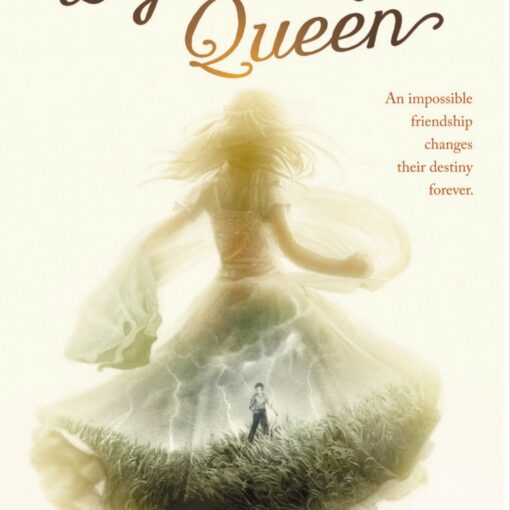 Mona Awad’s award-winning novel Bunny is a bizarre “down the rabbit hole” story blurring the lines between female friendship and dark magical realism. Impossible to guess which turn is going to happen next, making this book so hard to put down. In this story you are taken through the point of view of Samantha. Samantha is a writer, her work mainly consisting of dark and sometimes unsettling stories. She is completing her MFA at the very prestigious Warren University. Her writing and the tales of her imagination are seen as disturbing and depressing by the four other women in her Cohort, the “bunnies” (how they refer to each another). The posse includes Kira, Eleanor, Caroline, and Victoria. They are the polar opposites of her and her best friend, Ava. Ava doesn’t go to Warren, but she has lots of negative opinions on the school and the people who attend, besides Sam. Ava has a cool way of life, she is the free-spirited energy that Samantha desperately needed after her first lonely year at Warren. In a way she was her saving grace. Samantha is gloomy, has a more alternative style, hair that covers her eyes, and a far from the conventionally perfect life. She doesn’t have the bunnies’ preppy style, money, or even a family. The bunnies seem to have their heads in the clouds. They are so out of touch that they appear to live in a different reality of rainbows and butterflies. Samantha absolutely despises these women until one day where she receives an invitation to “Smut Salon,” a workshop party the bunnies host. She starts to see that these girls are not as innocent as they appear; swiftly entrancing her into their preppy yet sinister world. It doesn’t take her very long to delve into their inner circle, becoming just like them. The girls have a literal hive mind way of thinking, and use mysterious mystical pills that keep them in a haze.
Mona Awad’s award-winning novel Bunny is a bizarre “down the rabbit hole” story blurring the lines between female friendship and dark magical realism. Impossible to guess which turn is going to happen next, making this book so hard to put down. In this story you are taken through the point of view of Samantha. Samantha is a writer, her work mainly consisting of dark and sometimes unsettling stories. She is completing her MFA at the very prestigious Warren University. Her writing and the tales of her imagination are seen as disturbing and depressing by the four other women in her Cohort, the “bunnies” (how they refer to each another). The posse includes Kira, Eleanor, Caroline, and Victoria. They are the polar opposites of her and her best friend, Ava. Ava doesn’t go to Warren, but she has lots of negative opinions on the school and the people who attend, besides Sam. Ava has a cool way of life, she is the free-spirited energy that Samantha desperately needed after her first lonely year at Warren. In a way she was her saving grace. Samantha is gloomy, has a more alternative style, hair that covers her eyes, and a far from the conventionally perfect life. She doesn’t have the bunnies’ preppy style, money, or even a family. The bunnies seem to have their heads in the clouds. They are so out of touch that they appear to live in a different reality of rainbows and butterflies. Samantha absolutely despises these women until one day where she receives an invitation to “Smut Salon,” a workshop party the bunnies host. She starts to see that these girls are not as innocent as they appear; swiftly entrancing her into their preppy yet sinister world. It doesn’t take her very long to delve into their inner circle, becoming just like them. The girls have a literal hive mind way of thinking, and use mysterious mystical pills that keep them in a haze.
The plot does seem to spiral a bit because Samantha is an over thinker. She often thinks she is being judged by everyone around her, but the reality is that she’s deflecting her own self judgments. The events she recounts don’t always make sense; it will begin to make the reader wonder if Samantha is even a reliable narrator, and if the rituals she is witnessing may not be as magical as they seem. The setting of this book takes place throughout the wintertime, giving it a really dark and cold feeling. The central idea seems to be Samantha’s loneliness, which makes the cold climate a perfect symbol to represent that. Samantha also has no family, her mother passed away when she was a teenager, and her dad is in hiding from various loan sharks. She lives in a very empty and barren apartment that lacks heat. She describes as it as dim and ugly. Each of the bunnies live in beautiful, lavish, colorful homes, warmed with great big fireplaces. Even Ava has a charming and cozy home with a fireplace, accompanying various eclectic decorations. All of these girls bring Sam a fulfillment she yearns for and its greatly represented by their housing. The imagery is also used as a tool that reflects Sam’s state of mind. She can describe the same exact thing as Mundane and ugly one day; the next day it could be beautiful and bright.
All in all, I definitely recommend giving Bunny a read. I would have to make myself put down the book after each chapter so I could have the joy prolonging it more than a week. I found it to be so captivating and binge worthy that I once missed my stop on the train. If you want to read something that is like the movie Mean Girls written as a psychological thriller, then this is your book.
Get the book! Check out Bunny by Mona Awad at BMCC’s library, the New York Public Library, the Brooklyn Public Library, or the Queens Public Library.
About the author This review is by Grace Phillips.
 This work is licensed under a Creative Commons Attribution 4.0 International License.
This work is licensed under a Creative Commons Attribution 4.0 International License.




